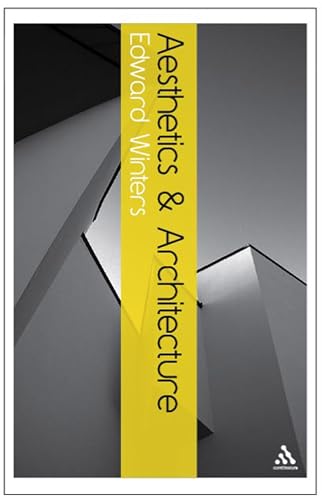
Aesthetics and Architecture (2007) Edward Winters
The author opens the Introduction with the question: What is architecture? and gradually positions the discussion in the realm of philosophy trying to find the answer “by first aligning architecture with the other arts and then by delineating the boundaries that are to be drawn between these other arts.” (p.4). Throughout history he identifies different claims about what architecture is or it should be, firstly by analysing the so-called ‘true forms of architecture’: Classicism with architecture handed by God or architecture as a form of mimesis; and Modernism which claims that architecture can be regarded as a set of quasi-scientific problems with quasi-scientific solutions, that architecture can respond and adapt to progress and that architecture has a purpose (functionalist architecture with aesthetic functionalism and austere functionalism). Further, structuralists aim to provide meaning to architecture as post-structuralist deny any ‘fixed meanings.’ The situationists claimed that the cities should be designed in terms of chance encounters, and the adepts of the Romantic movement tried to secure the value of architecture disregarding its functions. Several other social claims regard architecture in the service of the public, inhabited architecture, architecture as ‘a form of life’ or architecture as a provider of value, etc.
In discussing architecture as a ‘work of architecture’, the author refers to Goodman’s argument in How buildings mean, that a relevant building must be a building plus reference, and by reference he means exemplification or expression. Intriguingly, the spectator’s experience of the building bears no importance.
In Architecture as public art, Winters reflects:
“If architecture is to be recognized as the place in which aesthetics and ethics converge, it is important that we seek to locate its value in the context of moral as well as aesthetic reflection. Its works provide the environment within which we see out the compass of our lives. In architecture, we feel the presence of our ancestors as well as that of our progeny. We feel bound not only to the communal present but also to the community beyond the present; that of our fellows brought alive in the art and architecture we have inherited; and of those who will live with us in the art and architecture we bequeath.” (p.101)
And then concludes that architecture has as duty the preservation and sanctification of our presence, but in the same time architecture has to make inventive contributions to the inherited ground.
About architecture and the public, the people, Winters underlines that architects have employed different methods of consultations and negotiations to understand the public’s needs.
“The client for architecture must be conceived more broadly than just the funding patron. The client, so conceived, and for whom the architect and patron are responsible, is the community whose use of the building has to be considered . […] Innovation and invention are required by newly formed social needs. The modern world is woven together by a historical thread that bring races and religions together to form a vibrant and colourful social fabric. We want our artists and architects to make works which respect the community at large and which draw upon our shared respect for partial histories. […] In architecture we want buildi ngs that encourage the community to come together.” (p.103)
About architecture as a form of life:
“The form of life will be that of a community whose values are to be found in the use of the building in which it finds its home; where members of the community live and love and laugh and labour. Architecture, as all the other fine arts, finds its worth in the ways in which it provides a common sense of who we are. These can be more cohesive ways of living together as a series of communities in search of common values. So, experience, the aim of aesthetic reasoning, can be seen to result from critical argument.” (p.104)
and again:
“Architecture can do this by providing us with places in which we feel the beauty and fragility of our dignity together with the solemnity of the lives we lead within its embrace. It can bring together the different strands of a multicultural society. Not b y representing their differences, but by uniting those different communities into one. (p.101)
As we seek comfort and solace, architecture might be the art (or the science) that offers that in a quiet way that does not demand our constant and undivided attention. The architect / the engineer works with materials, their characteristics and particularities, their strength and so on, he/she than matches them “in a way which makes a place worthy to serve the purposes of the community for whom it is built.” (p. 151)
Ioana Mădălina Moldovan
Universitatea Tehnică din Cluj-Napoca
Winters, Edward. Aesthetics and Architecture. Continuum International Publishing Group,
2007.
